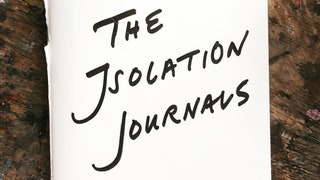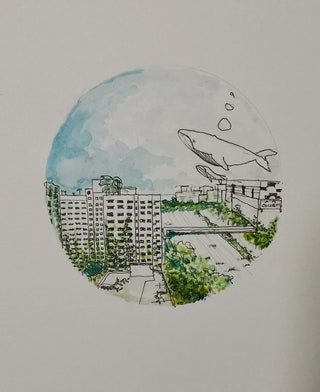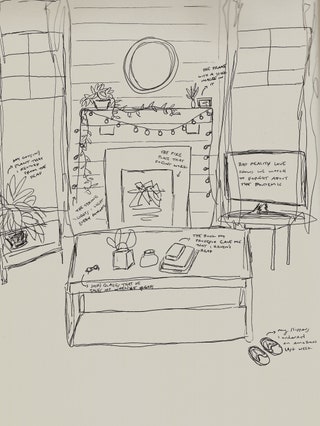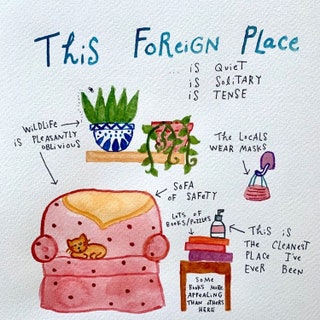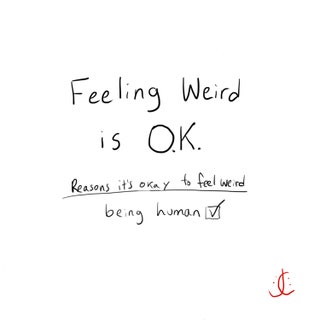Writer and Cancer Survivor Suleika Jaouad’s New Project Encourages Connectivity Through Creativity During Quarantine
Every week, Vogue will be spotlighting the medical workers, teachers, and Good Samaritans who are giving back to those in need during the coronavirus crisis.
Quarantine is nothing new for writer Suleika Jaouad. She was diagnosed with leukemia at 22, and for much of the next three years, Jaouad was confined to bed. For weeks on end, she wasn’t able to leave her hospital room or open a window. Today, Jaouad is cancer free but back in isolation. For the last three weeks, she has been living at her parents’ house upstate and working in their attic space, where she is planning the release of her memoir in 2021 titled Between Two Kingdoms. Though she is healthy at the moment, the self-isolation that has become standard during the coronavirus outbreak is familiar territory for her—as is dealing with the emotions that come from being isolated. When Jaouad was undergoing her cancer treatments, she began a project with her friends and family in which they all did one creative act a day for 100 days. Her dad wrote down childhood memories while her mother painted tiles, which she then compiled and formed into a protective-like shield that hung in Jaouad’s room. As for Jaouad’s project, she returned to what she’d always leaned on in hard times: keeping a journal.
Jaouad began reflecting on the exercises that she and her parents did during her treatment. She thought about how much joy it brought her then, and how it might do the same for other people who are currently feeling lonely and helpless in the face of the coronavirus pandemic. So she decided to launch a new version: The Isolation Journals, which would last 30 days and would incorporate prompts from a collection of artists and creatives including singer-songwriter Maggie Rogers and Eat Pray Love author Elizabeth Gilbert.
Last week, Jaouad launched the project on her social media accounts and her website. Participants sign up through email and receive free daily prompts that encourage them not only to respond with journal entries but also pieces of music, recorded dance videos, and original artwork. Recent prompts have included “write about a time when you were dead wrong about somebody,” and “write a letter to your younger self.” With permissions, some of the work is shared on Jaouad’s social media and through the hashtag “TheIsolationJournals,” but mostly, they’re meant to offer a sense of solace, inspiration, and connectivity for the participant.
Jaouad plans to continue The Isolation Journals project beyond the 30-day mark she originally set. The author explains why she wanted to help those through this time of isolation and how creativity can be an antidote for loneliness.
How did you come up with the idea for The Isolation Journals and how has the community grown in the last week since launching?
When I was in treatment for leukemia, especially the first year, I spent most of my time in isolation. My friends and family would jokingly call me “bubble girl” because I was stuck in a hospital room and anyone who entered had to wear a face mask or surgical gown. I wasn’t allowed to leave my room or even open a window. So I think the world is experiencing and learning firsthand how this level of isolation can take a pretty big toll on you, not only physically but emotionally. When the pandemic hit and everyone went into quarantine, I kept thinking about how familiar this experience is. I don’t consider myself an expert or anything, but quarantine and isolation are things that I do know very well and it made me think about the 100-day project and how I could make it available to a larger community. So I hatched the plan just a little over a week ago here in the attic, and I didn’t necessarily expect the types of responses we’ve gotten, but it’s been really beautiful to see it resonating throughout the world. I’m seeing people of all ages and from over 100 countries participating in The Isolation Journals.
Why did you decide to cast a wide net of people who are giving the prompts?
We have writers, artists, musicians, creators, even unsung heroes like a six-year-old named Lou Sullivan who is a cancer patient who probably gave us one of our most popular prompts thus far. I think a lot of people do morning journaling as a practice at home, which I’ve done for years, but I think it’s helpful in times like this when we’re cooped up and we are more prone to getting into having these repetitive thoughts, especially when there’s so much anxiety in the world. So I love the idea not just of sitting down and writing in your journal, but getting some creative prompts from other voices and perspectives. Through my own work over the years, I have been very fortunate to find a vibrant community of artists, so I reached out to Maggie Rogers, who I knew long before I was performing, and I reached out to Liz Gilbert, whose workshop I attended recently in Philadelphia.
I’ve reached out to a lot of authors. I felt like this was an opportunity not only to hopefully make a creative offering that might be useful to people and help them feel a little bit less isolated, but it was also an opportunity to highlight the work of people I admire and to highlight the books they have coming out this spring. So many have had book tours and publicity canceled and they’re struggling to figure out how to take these projects that they’ve worked on for years and help get them out into the world.
What has the response been from those who have sent in their journal entries?
The response has been overwhelming. My grandmother is participating; I’ve heard from classes of elementary school kids who are participating. I’ve also heard from doctors who are participating who are desperate for a little release from the incredible amount of stress and pressure that they’re under right now. The first day, I wrote a prompt that ultimately boiled down to asking people to write a letter to a stranger. One of the responses that we got that moved me so much was from a doctor who wrote a letter to the security guard at the hospital whom she doesn’t know but passes every day, which I just found so beautiful.
I think what’s been the most surprising thing for me is the different ways in which people are interpreting these journaling prompts. People have made paintings, they’ve created cartoons, they’ve sent poems and prose pieces and performed original songs. Yesterday, a young woman responded to the prompt with an interpretive modern dance, which I loved so much.
How do you hope that this practice of journaling will make people feel through their own self-isolation and what do you hope they learn from the experience?
The bulk of people who have participated would never consider themselves writers or artists, or they’ve never even journaled but they’re just looking for a little relief. I don’t know if you’ve noticed this, but there is a lot of pressure to make something of the circumstances we are in right now. I’ve noticed this anxiety to accomplish something and this pressure to be productive within these incredible hard times, and I’m not sure that really serves us. My hope is that this is an opportunity for people to do something just for themselves.
The aim of The Isolation Journals is not to create the next King Lear or anything, but I hope it gives people a way to reconnect to their joy and curiosity. I hope it also gives them permission to be “a bad artist.” I write for a living, and often the second that I feel a sense of expectation, whether it’s self-imposed or coming from an outside opportunity, I can immediately feel myself kind of tense up. I’ve been having so much fun writing the prompts myself, and in the back of my own journal, I have these little guidelines for myself: “It doesn’t have to be long, it doesn’t have to be perfect”; things like that. I did a painting the other day. This morning I did a little dance, which isn’t something I plan on sharing.
When I started chemo I was in-patient for about six weeks and when I first went into the hospital, I had all of these grand ambitions about what I was going to do in the hospital room. I thought, Oh, this is a great opportunity to catch up on all of the reading and writing I’ve been meaning to do. I got a copy of War and Peace and other ambitiously long books that I thought I could make my way through. I quickly realized that I wasn’t going to be able to do those things, and to this day, I have yet to read War and Peace. But it took me a long time to kind of let go of the expectations that might have made sense in the context of my former life and start to imagine new possibilities and new ways of being and working within those limitations and constraints that I found myself in.
I think that’s the challenge that we’re all bumping up against right now as we all try to figure out how to continue on in a way that’s inevitably different and going to be different. After this is over, it’s about holding on to that sense of self while also accepting that we’re going to have to make some pretty drastic adjustments.
Do you plan to continue the project beyond the 30-day mark?
We are definitely hoping to continue beyond these 30 days, and I think we’re still very much exploring what that could look like. We’re also looking to find some kind of space, whether it’s going to be a website or some other platform, that we can create so that we can assemble the pieces people have made (with their permission, of course), and create a sort of visual map. I’m just here at my computer in my little attic and have the privilege of seeing the surge and breadth of different types of pieces being submitted by so many different types of people. There’s just something so beautiful about that, especially now when I think a lot of people are feeling disconnected and alone.
